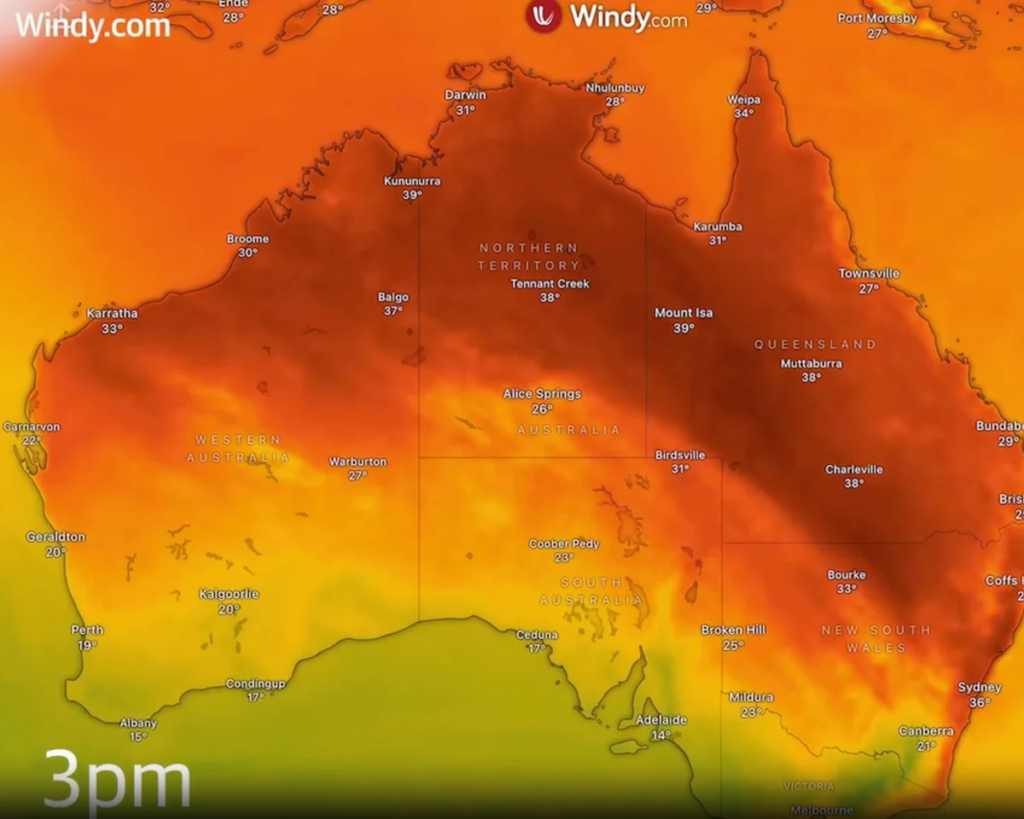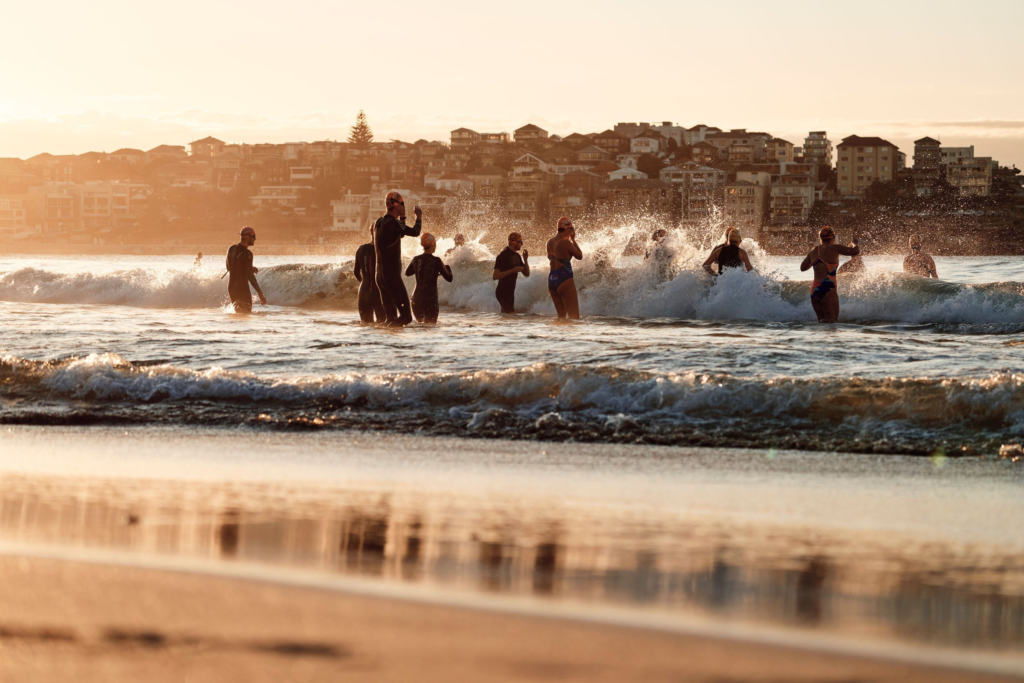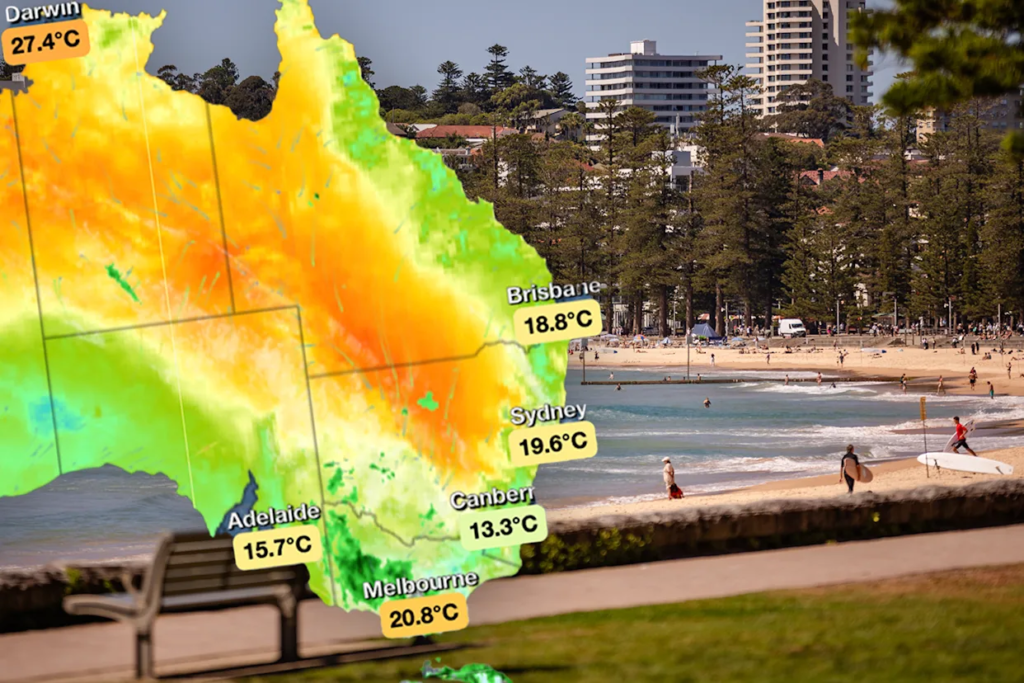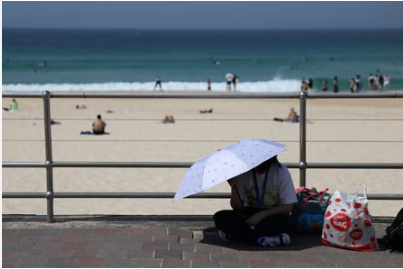Record-Breaking Heat Scorches Eastern Australia
Sydney blistering weather heat has taken hold as temperatures soar across eastern Australia. Forecasts show Sydney could reach 39°C, which would break the previous October record of 38.2°C.
On Tuesday, both New South Wales and Queensland experienced their hottest October days since records began in 1910. Birdsville in Queensland hit 46.1°C, while Bourke in NSW recorded 44.8°C.

Forecast Points to “Blistering Day” in Sydney
A senior meteorologist warned of a blistering day across eastern Australia. Temperatures in Sydney suburbs are also expected to climb into the high 30s, with some areas possibly hitting 40°C.
By early afternoon, the CBD reached 36.8°C. Rising inland winds continued to drive hot air towards the coast, pushing temperatures higher through the day.https://www.youtube.com/watch?v=io8x_2MDadU
Strong Winds Compound Weather Risks
While the east copes with heat, southern states are facing strong winds. A low-pressure system sweeping across Bass Strait is bringing gusts up to 130km/h along Victoria’s southwest coast.
Melbourne faced widespread winds between 90km/h and 100km/h. Coastal areas and the Dandenong Ranges reported even stronger gusts. Authorities have issued emergency warnings urging residents to prepare for fast-changing conditions.

Fire Danger High as Heat Builds
Extreme heat and high winds have prompted total fire bans in Greater Sydney, the Hunter region, Illawarra, Shoalhaven, and parts of western NSW.
By Wednesday afternoon, 37 bush and grass fires were burning across NSW, with 13 still uncontrolled. Officials warned that the combination of heat, wind, and dry vegetation increases the risk of fast-moving fires.
Health and Safety Precautions Urged
NSW Health urged residents to take precautions during the Sydney blistering weather heat. Vulnerable individuals, including the elderly and those with medical conditions, are especially at risk.
To stay safe, authorities recommend remaining indoors during peak heat, keeping blinds closed, drinking water regularly, and avoiding physical activity outdoors. Symptoms of heat stress—such as fatigue, nausea, dizziness, and cramps—should be treated immediately.

Heatwave Driven by Climate and Weather Patterns
Meteorologists explained that the intense heat developed after hot air built up over Western Australia and the inland Northern Territory. A strong southern weather system has pushed that heat across the country.
Southeast Queensland is expected to see its hottest day on Thursday, with the heat likely to persist into the weekend.




